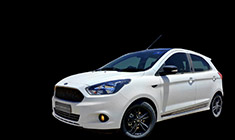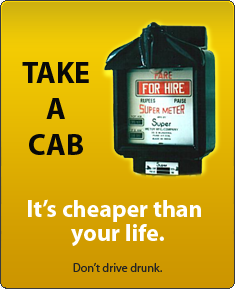News
Braking distance formula & my experience on the skid pad
For Formula 1 drivers, the reaction speeds can be as less as a third of a second. But for normal people, it is estimated to be a full second.
BHPian supermax recently shared this with other enthusiasts.
Many of us have driven cars for a long time but the number of times we've had to perform full-blown emergency style braking, where the intent is not to slow down the car, but to come to a complete stop in the quickest possible time, varies. Some of us might have had to do this multiple times, while others might never have been exposed to such situations. The speeds at which such emergency braking has been experienced would also significantly vary.
In Sweden, before taking a driving test, one has to clear a theory test, which includes many questions requiring us to calculate stopping distances. We also need to complete a mandatory risk training session on a special skid pad, where we practice emergency-style braking bringing a car to a complete stop after reaching various target speeds. This ensures that we not only know the theory behind stopping distances, but also know what it feels like, and exactly how long stopping distances can be in real-world conditions. And oh, we carry out these emergency stopping tests in both dry and simulated icy conditions (soapy water), so we are able to realize just how different stopping distances can be, depending on the conditions.
The formula for calculating the braking distance
There is a simple formula for calculating braking distances in ideal conditions (dry and perfect road, a car with perfect tires). This formula is thus:
- Divide the speed by 10 (or take away a zero)
- Square the result (original speed divided by 10 and multiplied by itself)
- Multiply the result by 0.4
If the speed of the car is 120 km/h, the braking distance under ideal conditions for this would be 12x12x0.4 which is 57.6 meters, or 189 feet.
For a car to stop from 70 km/h, the theoretical braking distance, therefore, is 7x7x0.4 which is 19.6 meters, or 64.3 feet.
Stopping distance vs braking distance
Braking distance is the time taken by the car to come to a stop after the brakes are hit. Stopping distance is the total distance a car rolls before it comes to a stop and this includes the reaction time to the incident that requires the braking.
Stopping distance = reaction distance + braking distance
For professional Formula 1 drivers, the reaction speeds can be as less as a third of a second, but for normal individuals, this reaction time is estimated to be a full second.
If you are driving a car at 120 km/h and see a cow or a child that suddenly ran onto the road, it'll take a full second before you actually hit the brakes. During this one second, your car would have moved 36 meters, i.e. reaction distance is 36 meters. Then, when you hit the brakes fully, the car takes a further 57.6 meters (in ideal conditions) before coming to a stop, a whole 93.6 meters after you spotted the cow in the first place, making the stopping distance 93.6 meters, or 307 feet. Do you think you would have been able to stop in time?
Another fun fact is that the rate of deceleration is not constant; speed decays slower at higher values and faster as it drops, so the speed stays high pretty long, before eventually dropping to non-fatal levels.
Personal experience on the skid pad
When I did my risk training, I actually did a 70 to 0 stop with a full emergency style braking by putting all my weight onto the brakes. This was extremely violent. The car slowed down really hard, the seatbelts tugged really hard, and the actual stopping distance was measured to be 25 meters.
I was then asked to guess how long the stopping distance would be in wet/icy conditions if I needed to stop from 60 km/h to 0. My guess was 60 meters. In reality, when I actually performed the braking manoeuvre, it was 97 meters, if I remember correctly. Reaction times didn't play a part in our tests, as we braked on command; the instructor gave the order to brake, on a two-way radio from outside the car, and we braked immediately upon receiving the order.
Conclusion
- Most of us grossly underestimate stopping distances thinking that we can stop on a dime, while in reality, it takes a lot longer.
- Many of us don't factor for the reaction time too, which can be the difference between something we thought would be a just miss, to an accident with a fatal outcome.
- If you have the opportunity, practice at a skid pad or race track to see for yourself just how long braking distances can be in real-world conditions.
- Prevailing road and weather conditions can cause your stopping distance to double or even triple, so adjust your driving style accordingly, to factor for altered conditions, where necessary.
- Use the formula stated above to calculate braking distances at various speeds and add in the reaction distances so you know where you potentially stand, instead of relying on crude guesses.
Here's what BHPian SS-Traveller had to say about the matter:
No one is capable of calculating these theoretical braking distances and stopping distances while driving, which leaves us the only option, that of leaving a safe gap from the car ahead. This space is called the crash avoidance space, or CAS.
Some say it's 2 seconds, and some say it's 3 seconds. What I was taught was:
For dry tarmac roads, with good tyres
- Till 60 km/h, leave a CAS of 2 seconds
- Above 60 km/h, it's 3 seconds
- Above 120 km/h, CAS should be 4 seconds
Add 1 second each for:
- Night-time driving
- Tired driver
- Poor tyre condition (but still legal tread)
Add 2 seconds each for:
- Wet roads
- Rain
- Debris such as leaf and gravel
Add 5 seconds each for:
- Waterlogging / water film on the road
- Snow / ice / gravel / sand
Based on your stopping distance / braking distance formula, I ran up a chart where we calculate the gap between vehicles at a given speed, with 2- and 3-second CAS. It certainly leaves adequate space for total stopping distance, with a margin of error on the safer side (which will account for the variations in braking distance between different cars and tyre sizes). It also explains why the CAS needs to progressively increase with rising speeds.
So the theoretical calculations are perhaps not the best way of figuring out stopping distance, but a simple counting of one-thousand-and-one -- one-thousand-and-two is enough to figure out if the CAS is sufficient. Why one-thousand-and-one -- one-thousand-and-two, one may ask. This is because the average human can pronounce 4-5 syllables in a second. One can choose to say anything repetitively, like one-banana -- two-banana or one-supermax -- two-supermax!
Here's what BHPian Blooming Flower had to say about the matter:
Where is the formula for calculating braking distance? It varies with different cars and their relevant components of braking; hence, cannot be quantified with a single straightforward formula. While the stopping distance formula is well understood the assumptions of braking distance are way too generic it seems.
Here's what BHPian GrammarNazi had to say about the matter:
Human cognitive limitations considered, speed kills, but bad braking kills more people.
Govts should set braking distance standards, instead of just speed limits. Car manufacturers should design brake components such that braking distances stay within parameters.
Govt should also mandate Traction Control System & Electronic Stability Program be made as standard for all large vehicles, especially cars above say 4 meters.
It'd be really good if this study is given the importance it deserves.
Here's what BHPian drmohitg had to say about the matter:
I think the easier way to educate drivers is to instill the concept of a safe gap rather than ask them to calculate braking distance in various conditions. In the UK, the standard practice is to always maintain a 2-second gap to the vehicle in the front under dry conditions, 4s in wet conditions, and 10s in ice/snow.
The figures may not be absolutely possible in our Indian cities but can be easily followed on our highways where so many times you see people tailgating etc.
Check out BHPian comments for more insights and information.


















